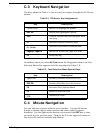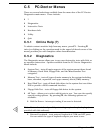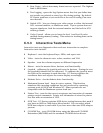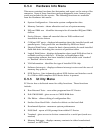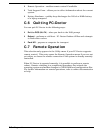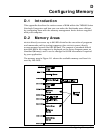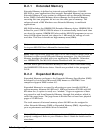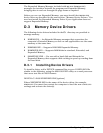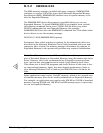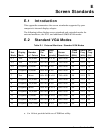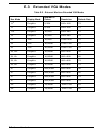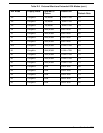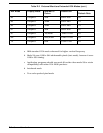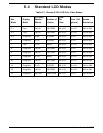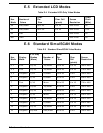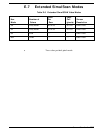
D.3.2 EMM386.EXE
The EMS memory manager provided with your computer, EMM386.EXE,
conforms to version 4.00 of the Lotus/Intel/Microsoft Expanded Memory
Specification (EMS). EMM386.EXE enables areas of system memory to be
used as Expanded Memory.
The EMM386.EXE device driver must be installed before you can use
Expanded Memory. To install EMM386.EXE in its simplest form, include
the following command line in your CONFIG.SYS file before any other
DEVICE commands that use Expanded Memory (for example,
RAMDRIVE.SYS) but after the HIMEM.SYS command line. This allows other
device drivers to use the memory manager.
DEVICE=C:\DOS\EMM386.EXE [options]
Parameters (also called switches or options) for the
EMM386.EXE driver are
described in the Microsoft Windows User’s Guide furnished with your new
computer. After it loads, the memory manager determines the amount of
Expanded Memory in the system and performs any required initialization.
n
Note: The 386 enhanced mode of Microsoft Windows allows you to simulate
part of Extended Memory as Expanded Memory using the
EMM386.EXE device
driver. However, this is not recommended as it degrades system perform-
ance.
MS-DOS also uses EMM386.EXE to enable Upper Memory Area (UMA).
This allows you to load TSR programs and device drivers in this area to free
up conventional memory. Again, this may degrade performance. Refer to
your Microsoft Windows User’s Guide or your MS-DOS User’s Guide for de-
tails.
Some applications may require “backfill” memory, which is the unused area
of standard memory that can be used by
EMM386.EXE as Expanded Memory.
For example, an application may require only 256 KB or 512 KB of standard
memory, leaving 384 KB and 128 KB of backfill memory space, respectively,
for use as Expanded Memory.
D-4 Configuring Memory



